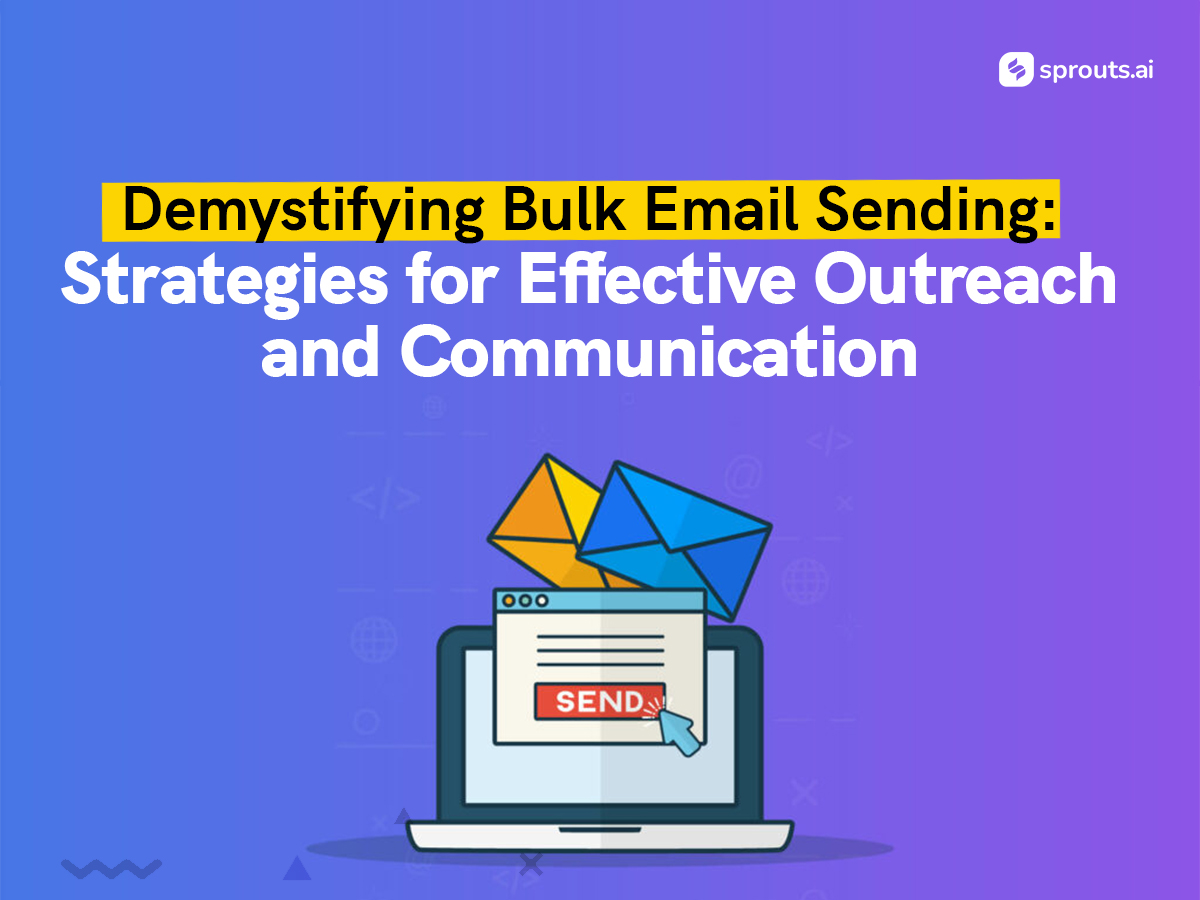Whether you’re a business aiming to connect with customers or a nonprofit seeking to mobilize supporters, the concept of sending bulk emails can be a powerful tool in your arsenal. However, its effectiveness relies on understanding the nuances and implementing a well-thought-out strategy. This blog will demystify sending bulk emails, offering insights and strategies for effective outreach and communication.
1. Know Your Audience
Before you hit send on that email blast, take a moment to understand your audience. Your recipients are not faceless entities but individuals with unique preferences and needs. Segment your email list based on factors such as demographics, behaviour, and interests. By tailoring your messages to specific segments, you’ll increase the relevance of your emails, making them more likely to resonate.
2. Craft Compelling Content
Your email content is the heart and soul of your outreach efforts. Keep these pointers in mind when crafting your messages:
- Personalization: Address recipients by their first name whenever possible. Personalized emails have a higher open and engagement rate.
- Clear Value Proposition: Make it clear why the recipient should open your email. What’s in it for them? Highlight the benefits they’ll gain from reading.
- Engaging Subject Lines: Your subject line is your first impression. It should be concise, compelling, and relevant to the email’s content.
- Concise and Scannable: People skim emails. Use short paragraphs, bullet points, and subheadings to make your content easy to digest.
3. Optimize for Mobile
With most emails being opened on mobile devices, ensuring your emails are mobile-friendly is crucial. Use responsive email templates that adapt to different screen sizes. Test your emails on various devices and email clients to ensure they look and function as intended.
4. Respect Permissions and Regulations
Sending bulk emails must comply with anti-spam regulations like the CAN-SPAM Act in the United States or GDPR in Europe. Always obtain explicit consent from recipients before adding them to your email list. Include an unsubscribe option in every email and honour unsubscribe requests promptly.
5. A/B Testing for Optimization
A/B testing is a powerful tool for refining your email campaigns. Test different elements of your emails, such as subject lines, CTAs, and content layout, to identify what resonates best with your audience. Use data-driven insights to improve your email strategy continuously.
6. Timing Matters
The timing of your email can significantly impact its success. Experiment with sending bulk emails at different days and times to determine when your audience is most active and engaged. Analyze open and click-through rates to find the sweet spot.
7. Use Email Marketing Tools
Invest in email marketing software with analytics, automation, and personalization features. Tools like Mailchimp, Constant Contact, or HubSpot can help you streamline your email campaigns and track their performance.
8. Monitor and Analyze Metrics
Your email campaign doesn’t end with sending. Regularly monitor key metrics like open rates, click-through rates, conversion rates, and bounce rates. Use these insights to refine your strategy and focus on what’s working.
9. Nurture Customer Relationships
Sending bulk emails isn’t just about one-off communications. It’s a tool for nurturing long-term customer relationships. Send follow-up emails, provide valuable content, and engage with recipients in a two-way conversation. Building trust takes time and consistent effort.
10. Maintain a Clean Email List
Over time, email lists can become cluttered with inactive or invalid addresses. Periodically clean your list by removing bounced emails and unengaged subscribers. A smaller, engaged list is more valuable than a large, unresponsive one.
11. Don’t Overdo It
While sending bulk emails is a powerful tool, resist the temptation to inundate your audience with emails. More frequent or relevant emails can lead to subscriber fatigue and increased unsubscribes.
12. Leverage Automation
Automation can save you time and ensure timely communications. Set up automated email sequences for onboarding, lead nurturing or follow-up. Just remember to keep them personal and relevant.
13. Continuous Learning
Stay updated with the latest trends and best practices. Attend webinars, read blogs, and participate in forums to learn from experts and peers.
14. Re-Engagement Campaigns
If you notice declining engagement from certain subscribers, consider running re-engagement campaigns. Send targeted emails to rekindle their interest and gather feedback on why they disengaged.
15. Metrics for Success
Ultimately, the success of your sending bulk emails efforts should align with your goals. Whether it’s driving sales, increasing brand awareness, or mobilizing supporters, establish clear KPIs and measure your progress toward achieving them.
When used strategically, sending bulk emails is a powerful tool for outreach and communication. You can create effective email campaigns that drive results by understanding your audience, crafting compelling content, adhering to regulations, and leveraging email marketing tools. Remember, successful email marketing is an ongoing process of optimization and relationship-building. Demystify the process, follow these strategies, and watch your email outreach efforts yield meaningful connections and desired outcomes.

